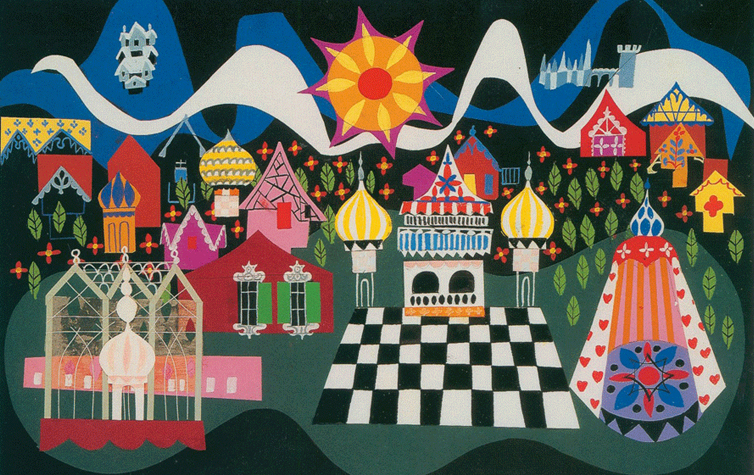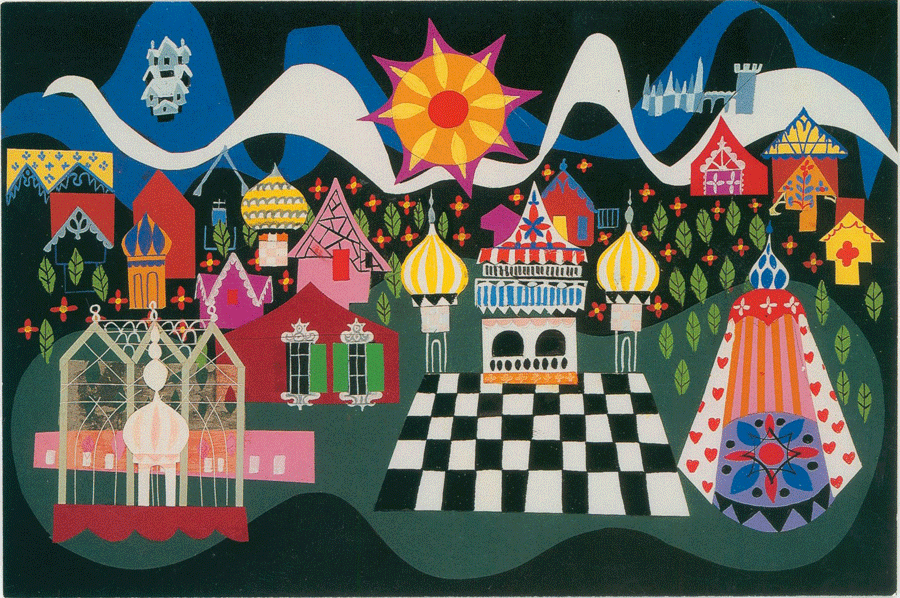
While some strains of Midcentury Modern have a no-nonsense flair, you can also see the era’s influence in places you may not expect—such as the familiar scenes of classic Disney shorts and films like “The Three Caballeros,” Cinderella and Peter Pan.
You may not know her name, but Mary Blair’s unique approach to modern design is responsible for the look and feel of several classic fixtures in the Disney universe.
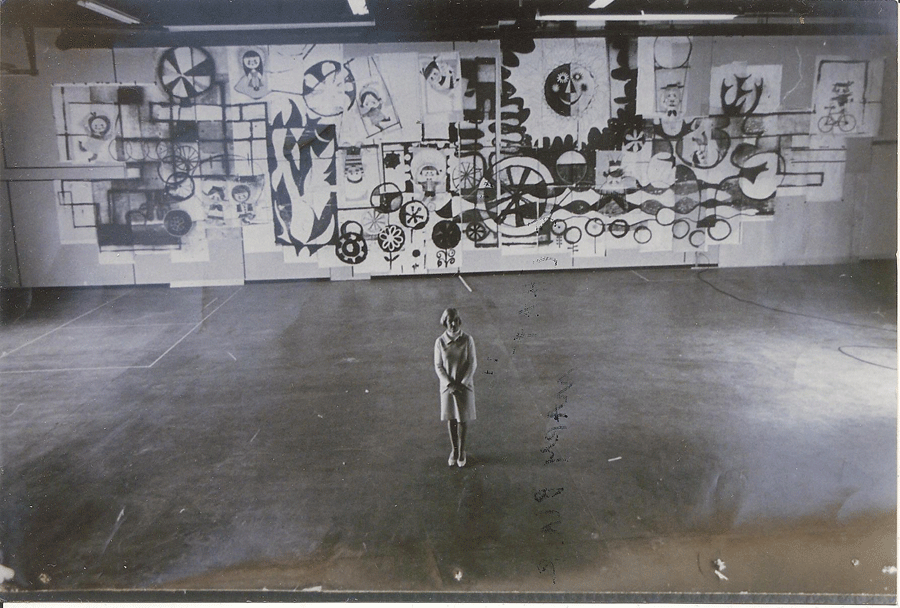
Amor por Color
Trained as an artist at Chouinard Art Institute in Los Angeles, Mary Blair graduated amidst the Great Depression. While she had trained as a fine art watercolor painter, she found work in MGM’s animation department. In 1940, she began working for Disney, and her big break came in Disney’s tour of Central and South America in 1941. The tour was at the invitation of the US government, the idea being a show of goodwill and to showcase the benefits of democracy with the goal of discouraging fascist movements. For Mary Blair, it exposed her to vibrancy in the colors, landscape, folk art and culture. From then on, her work incorporate bold, eclectic blends of color as well as a folk art influence alongside modernist elements. When they returned, Mary Blair was part of the design team for “Saludos Amigos” and “The Three Caballeros.”
In the catalog for Magic, Color, Flair: The World of Mary Blair exhibition, John Canemaker writes, “Walt and Lillian Disney displayed very few Disney Studio artworks in their L.A. home. Among the handful were two framed portraits of Peruvian children, concept art for ‘Saludos Amigos’ painted by Mary Blair during her visit to South America.”
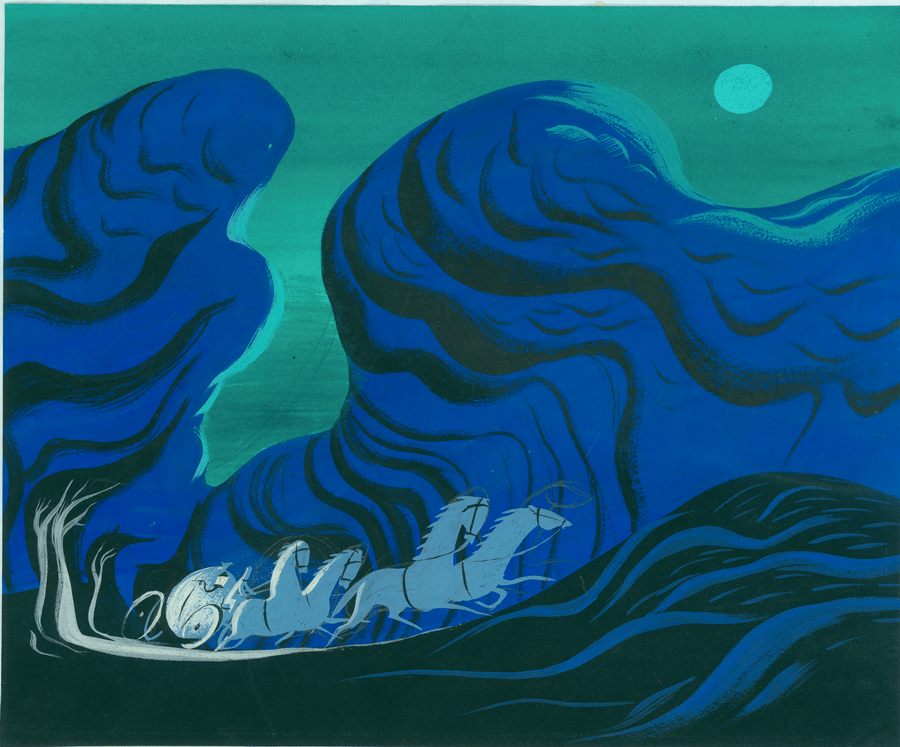
Walt Disney was a great admirer of Blair’s work, and after WWII, when the studio was in the position to make full-length feature films, Blair was instrumental in shaping their design. She worked closely with Walt Disney, creating conceptual designs for films like Cinderella, Alice in Wonderland, and Peter Pan. While not an animator, her concept art developed so much of the now-familiar scenes on the screen like the children flying in the air in Peter Pan or Cinderella’s coach racing in the night.
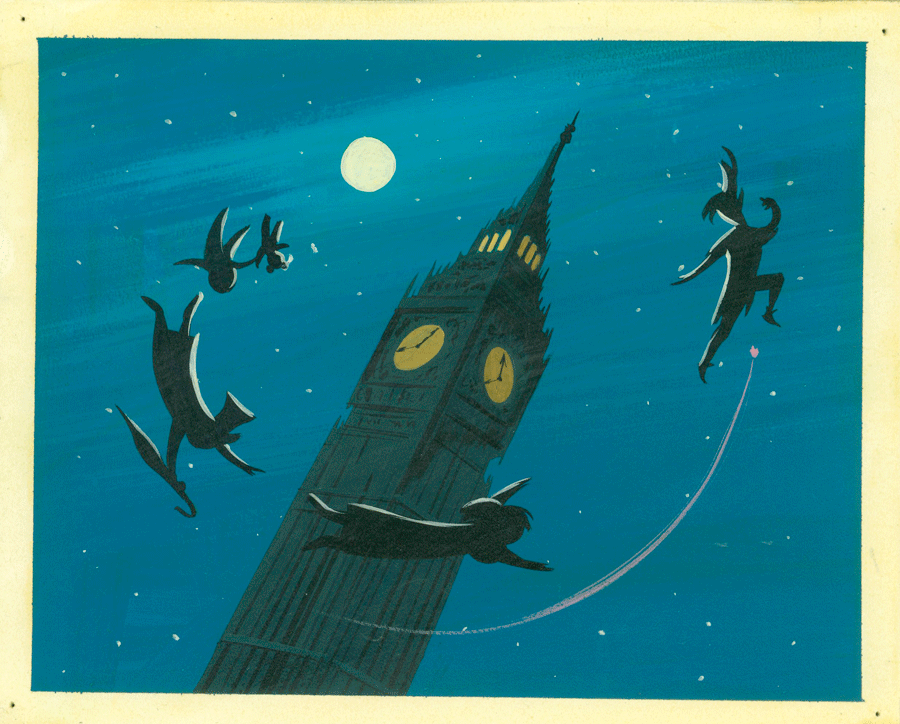
Transferring Mary Blair’s art to the screen was sometimes an issue since the playful, modern approach was flat while animators were responsible for creating life-like believability. Walt Disney believed both were important, but without being an animator himself, he could not advise his team how to accomplish this balance.
Beyond the Screen
In 1953, Mary Blair decided to pursue a break to try something different and have more time with her family. She illustrated children’s books such as I Can Fly and Baby’s House, with her characteristic modern flatness, child-like playfulness and surprising color choices.
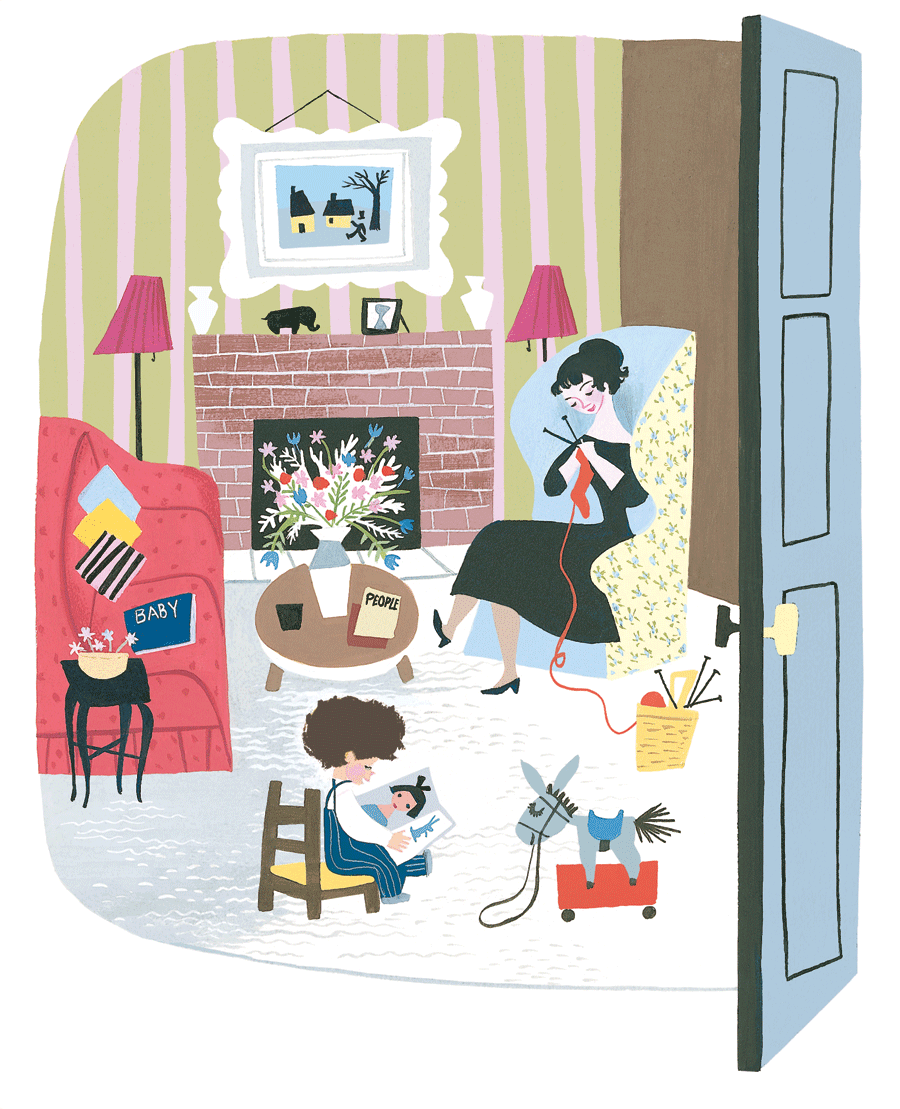
When she returned to Disney, Walt Disney tasked her with taking the lead in designing a boat ride for the 1964 New York World’s Fair, It’s a Small World. (The ride was subsequently duplicated for Disneyland and Disney World.)
She also designed other large-scale projects like a 220-square-foot mural made of fire clay tiles for the Jules Stein Eye Institute at the UCLA Center for Health Science. An even bigger feat was the Tomorrowland murals at Disneyland, two ceramic tile murals facing each other and each 54 feet long and 15 feet high as well as a 90-foot ceramic mural in the elevator shaft of the Contemporary Resort Hotel at Walt Disney World.
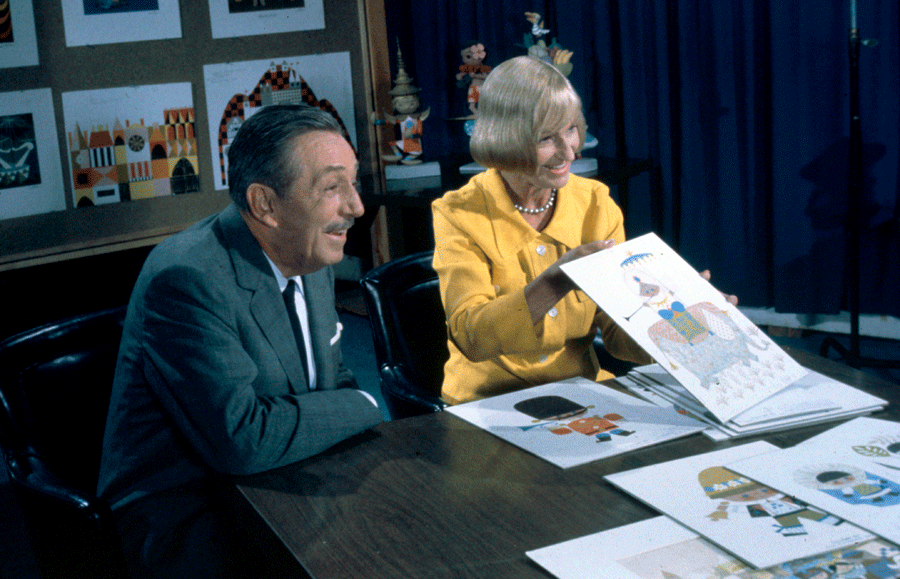
Stay tuned next week for another midcentury woman who helped bring the Disney vision into the three-dimensional world through landscape.
Atomic Ranch is Celebrating Women’s History Month!
March is Women’s History Month, and to celebrate, join us as we showcase some of the midcentury’s most beloved women designers as well as some modern makers inspired by their legacy. Click here to read more about the ladies behind your favorite designs, pieces and places.

